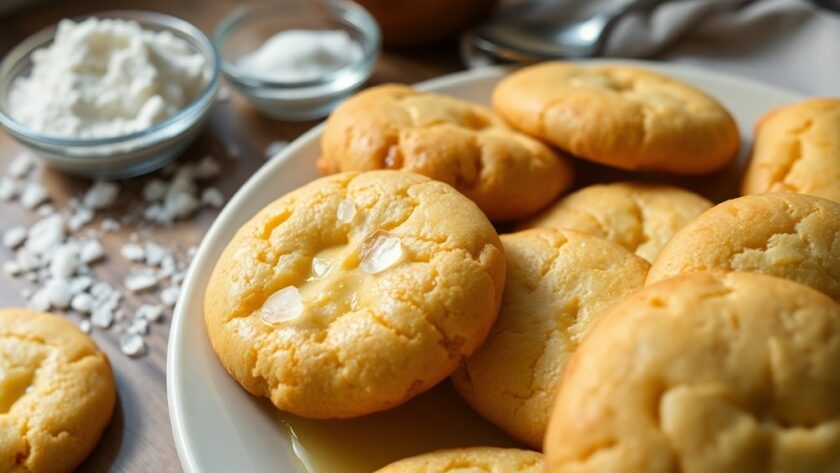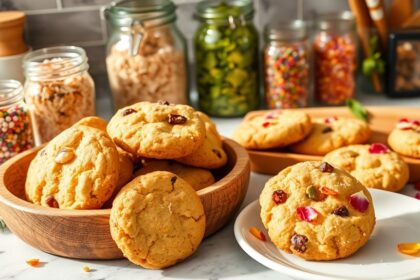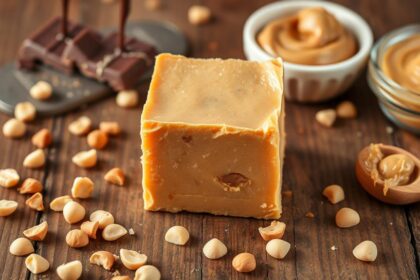If your cookies have too much butter, you'll notice they're flat and greasy. Start by adding ½ cup of flour to absorb some moisture. Chilling the dough for 20-30 minutes can also help improve handling and texture. Consider including an extra egg yolk for better structure. For long-term fixes, measure butter accurately and think about swapping some butter with applesauce or yogurt. Adjusting the amount of flour can also enhance the cookie's texture. Incorporating these changes not only helps but can take your baking to the next level, providing even more helpful tips along the way.
Identifying Excess Butter Issues
When you whip up a batch of cookies, it's crucial to pinpoint any excess butter issues right away. If you notice your dough consistency is runny, that's a clear sign you might've added excessive butter. This not only leads to flat cookies but also compromises their texture and structure. Instead of a delightful bite, you'll end up with greasy, shiny surfaces that are dense and unappetizing. Additionally, if you find yourself working with a sweet batter, remember that cream cheese frosting can enhance flavors but must be balanced with the right amounts of dry ingredients. Choosing a gluten-free flour option can also help improve the overall texture and flavor of your cookies.
To avoid this, start by accurately measuring butter. Weighing it instead of using volume can make a significant difference; remember, one stick of butter weighs 4 ounces or 113 grams. Additionally, using the right gluten-free flour can help maintain the desired texture and prevent excessive spreading.
When your dough feels overly soft or spreads too much on the baking sheet, it's time for some adjustments. Recognizing these signs early can help you improve the final product. If you catch excessive butter issues in time, you can tweak your recipe by adding more dry ingredients to balance things out.
Don't let runny dough ruin your baking experience—stay vigilant and make the necessary changes to guarantee your cookies come out perfectly every time!
Immediate Fixes for Dough
- Add half a cup of flour incrementally to absorb excess moisture and improve structure.
- Chill the dough for 20-30 minutes to firm it up, making it easier to handle and reducing spreading during baking.
- Incorporate an additional egg yolk to enhance the dough's structure and moisture balance, counteracting the effects of excess fat.
- Mix in dry ingredients like oats or shredded coconut to add texture and absorb some of the excess butter.
- If the dough remains too runny, add 1-2 tablespoons of cornstarch to thicken it without altering the flavor markedly.
- Consider using low-sugar alternatives like unsweetened applesauce to replace some of the butter, adding moisture while reducing overall fat content.
Long-term Adjustments to Recipes
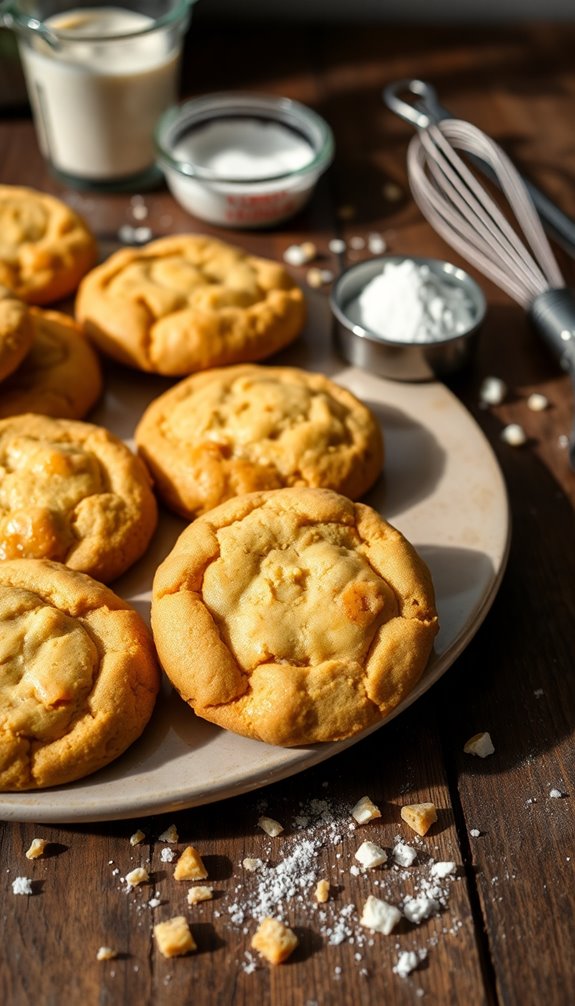
To achieve perfectly balanced cookies over time, you'll need to make some long-term adjustments to your recipes. Start by accurately measuring butter using a kitchen scale. This will help you avoid excess butter that can lead to flat cookies.
If you find your cookies consistently too rich, consider substituting a portion of the butter with applesauce or yogurt to reduce fat while maintaining moisture and flavor. Additionally, using natural sweeteners can enhance flavor without adding excess fat. Incorporating sugar-free alternatives can also help manage sweetness levels without compromising texture.
Next, adjust your flour amount. Adding an extra 1/4 to 1/2 cup can help balance the excess butter and improve the structure of your cookies.
Keep a detailed baking journal to document these ingredient adjustments, baking times, and outcomes. This will be invaluable for refining your future baking attempts.
Experiment with different butter types, such as unsalted butter or a blend of butter and margarine. Each type can greatly affect cookie texture and flavor balance. Additionally, consider using healthier ingredient swaps to enhance your cookie recipes while keeping them guilt-free.
Baking Techniques for Success
Improving your cookie baking skills involves not just ingredient adjustments but also refining your techniques.
Mastering these baking techniques can make a big difference, especially when dealing with cookie dough that has too much butter. Here are some tips to help you create cookies with better structure:
- Chill the cookie dough for at least 20 minutes to solidify the fat. This technique can also help in achieving a high protein content that supports muscle recovery. Additionally, the use of almond extract in your cookie dough can enhance the flavor profile.
- Gradually incorporate additional flour to improve texture without drastically altering your recipe.
- Use room temperature ingredients for an even mix and consistent results.
- Bake at a lower temperature, around 325°F, to allow for better rise and structure.
- Rotate baking sheets halfway through to guarantee even cooking.
Additionally, consider using easy vegan substitutions to enhance your cookie's flavor profile while maintaining a delightful texture.
Learning From Baking Mistakes
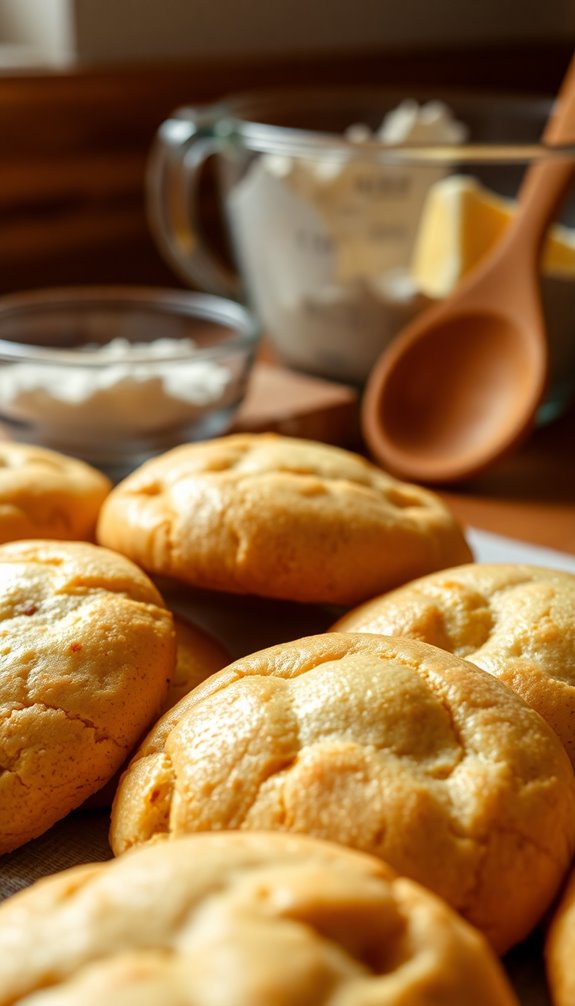
While baking can be a delightful experience, mistakes often happen, especially when it comes to ingredient ratios like butter. When you encounter excessive butter in your cookies, don't see it just as a failure; instead, view it as a chance to learn.
Analyzing your recipes for common baking mistakes helps you prevent future mishaps and improve outcomes. Incorporating nutrient-rich swaps can also enhance your cookie recipes, making them healthier and more enjoyable. For example, using high-protein ingredients can help balance out excess moisture and add nutritional value.
Engaging with the baking community can also be incredibly beneficial. Sharing your experiences allows you to gather valuable tips and advice on correcting overly buttery dough. You might find that others have faced similar challenges and have effective solutions.
Keeping a baking journal is another great way to document adjustments made to recipes. This practice enables you to track what works and what doesn't, giving you a solid reference for future baking.
Experimenting with different ingredient choices, like salted versus unsalted butter, can reveal how these variations affect cookie texture and flavor. You may also find that adjusting the type of flour used can help balance the moisture content in your cookie dough.
Embrace the learning process. Treat your baking mistakes as opportunities for growth that can lead to more successful cookie batches.
Conclusion
Now that you know how to tackle cookies that swim in butter, you can transform your baking mishaps into sweet successes. Picture your kitchen as a canvas, where each ingredient dances in harmony, creating the perfect cookie masterpiece. With a sprinkle of adjustments and a dash of patience, your treats will rise like golden sunflowers, inviting everyone to savor the delightful aroma. So roll up your sleeves and let your baking adventures begin—delicious cookies await!

